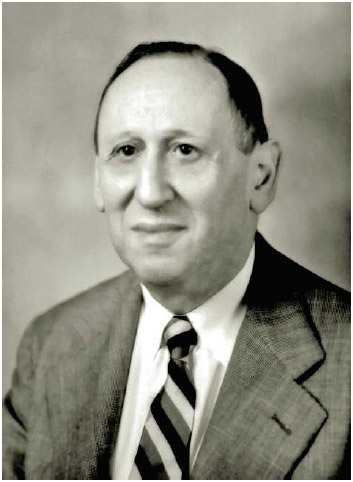
Leo Kanner
Leo Kanner: A Life of Curiosity, Dedication, and Lasting Influence in Child Psychiatry and Autism
Leo Kanner, born on June 13, 1894, in the small town of Klekotow in Austria-Hungary (now Ukraine), became one of the most influential figures in child psychiatry and autism research. His journey from Europe to the United States and his pioneering work at Johns Hopkins University shaped modern understanding of autism and solidified his legacy in psychiatry. Here, we explore the milestones, interests, family life, and lasting contributions of Leo Kanner.
Early Life and Education
Leo was the son of Hermann Kanner, a grain merchant, and Clara Kanner. He grew up with at least one sibling, a brother named Arthur, who shared his early years in Austria-Hungary. The Kanner family moved to Berlin, Germany, during Leo’s youth, where he received his early education at the Sophien Gymnasium. His academic journey continued at the University of Berlin, where he obtained his medical degree in 1921. The budding psychiatrist emigrated to the United States in 1924, eager to develop his career in the rapidly advancing American medical field.
Early Career and the Move to Johns Hopkins
Kanner began his career in the United States at Yankton State Hospital in South Dakota, where he gained valuable experience working with patients in a state mental health facility. His commitment and talent soon earned him a position at Johns Hopkins University in 1930, a prestigious move that defined much of his professional life. Kanner settled in Baltimore with his family and remained at Johns Hopkins throughout his career, helping to shape the field of child psychiatry.
Life Outside the Office: Passions and Interests
Kanner was an intellectual with varied interests outside of psychiatry. Fluent in multiple languages, including German, English, and Yiddish, he valued communication across cultures and engaged with diverse academic and artistic fields. He was an avid reader of literature, an enthusiast of classical music, and frequently attended concerts. His love for writing extended beyond his medical research; he enjoyed penning essays and articles on a range of topics.
In addition to his literary pursuits, Kanner was passionate about history—particularly medical history—and the arts, regularly attending the theater. He maintained a disciplined exercise routine, favoring swimming and walking, and engaged actively in community life by giving talks and lectures. These interests enriched his approach to psychiatry, giving him a well-rounded perspective on human behavior and mental health.
Family Life: Supportive and Close-Knit
In 1921, Kanner married June Lewin, who became a steadfast partner throughout his career. Together, they had two children, Anita and Albert. The Kanner family was close-knit, fostering an environment of intellectual curiosity and cultural involvement. June, who was academically inclined herself, played a significant role in managing the household, allowing Kanner to focus on his demanding career.
The family lived in a house near Johns Hopkins University, where they frequently hosted gatherings for friends and colleagues, blending academic discussion with family life. Both Anita and Albert were inspired by their parents’ dedication to knowledge and pursued higher education, extending the family legacy.
Influences and Mentors: Shaping a Pioneering Psychiatrist
Kanner’s formative years in Berlin introduced him to influential mentors, particularly within the field of psychiatry. The work of Emil Kraepelin, a pioneer in psychiatric classification, greatly impacted Kanner’s approach to diagnosis and classification. At Johns Hopkins, Kanner was mentored by Adolf Meyer, one of the most influential psychiatrists of his time. Though Kanner was well-versed in Freudian theories, he took a different approach in his work, focusing more on observational and clinical research.
Kanner’s studies also drew from Eugen Bleuler’s research on schizophrenia, which influenced his later studies on autism. Contemporary figures like Leo Alexander and Hans Asperger also impacted his ideas, as did historical medical figures like William Osler and Sir Thomas Browne. Kanner’s holistic approach to psychiatry, which included collaboration with pediatricians, neurologists, and psychologists, helped him establish the field of child psychiatry in the United States.
Pioneering Work in Autism
Kanner’s groundbreaking work in autism began with his 1943 paper, “Autistic Disturbances of Affective Contact,” which laid the foundation for modern autism research. In this study, he identified a distinct set of behavioral characteristics in children, including social withdrawal, resistance to change, and unique language patterns. Kanner coined the term “early infantile autism” and described what became known as Kanner’s Syndrome or classic autism. His meticulous descriptions and diagnostic criteria shaped the field and remain a significant contribution to psychiatry.
In addition to his autism research, Kanner authored numerous influential texts, including his 1935 book Child Psychiatry, which became a staple reference for professionals. His work established the first child psychiatry clinic at Johns Hopkins and created the diagnostic criteria that later influenced the DSM, the diagnostic manual used by psychiatrists worldwide.
Recognitions and Lasting Legacy
Throughout his career, Kanner received multiple awards and honors for his groundbreaking contributions to child psychiatry and autism. His approach to psychiatry and autism research, rooted in detailed clinical observations and a comprehensive understanding of behavior, continues to shape contemporary autism research and child psychiatry.
Leo Kanner’s legacy remains a cornerstone in the field of psychiatry. His insights into autism and his holistic approach to understanding mental health have had a profound impact on the study of child development, leaving a lasting influence that continues to benefit the field and inspire future generations of psychiatrists and researchers.
